What fish get along with shrimp?
A big topic in aquaristics is always the community aquarium. As great as the small colorful shrimp may be, in the long run a pure shrimp aquarium with dwarf shrimp that are almost exclusively on the bottom is a little too quiet for many. So fish are needed that enliven the upper regions and use the open water areas.
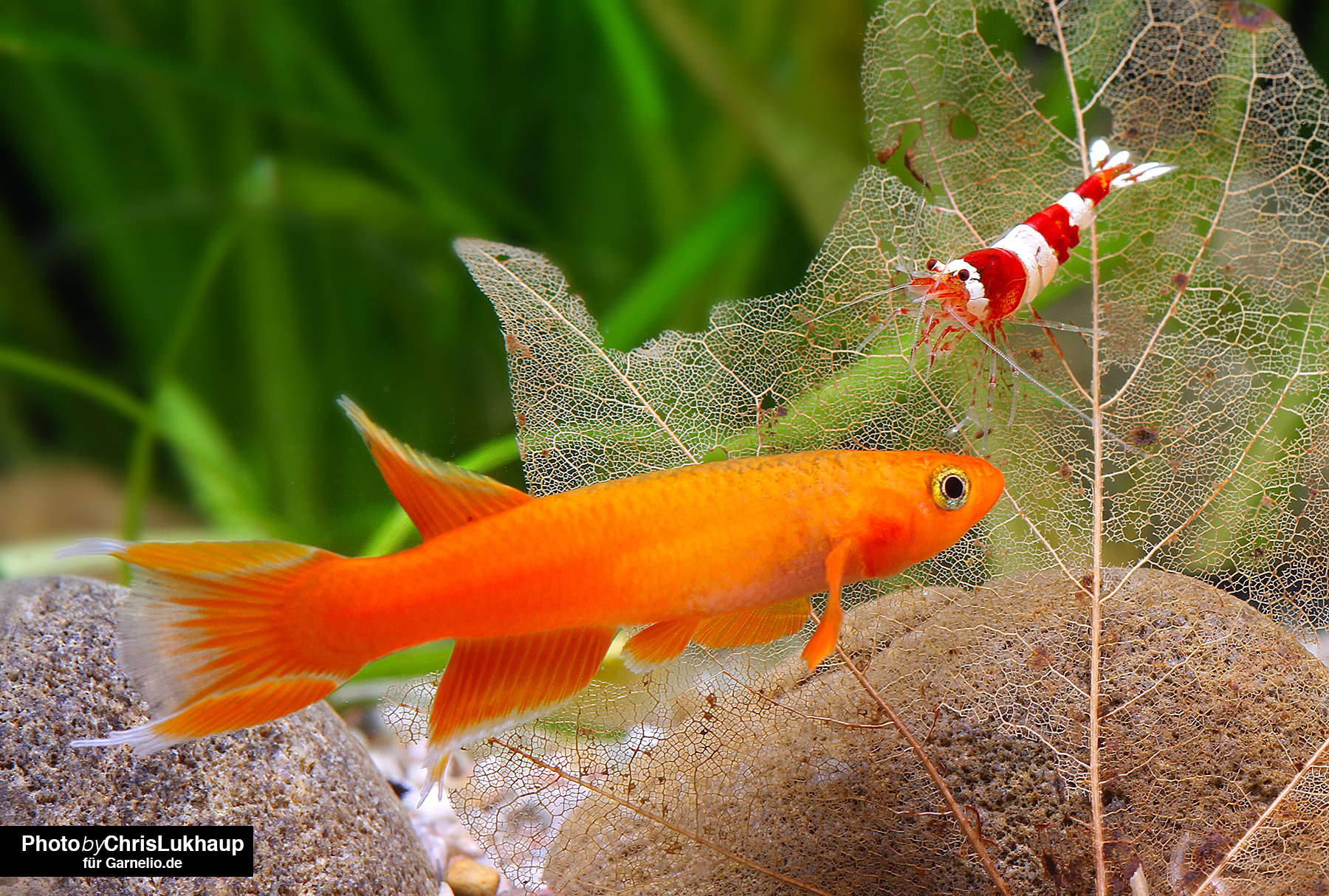
Basic information about keeping fish and dwarf shrimp
Basically, if these fish are not exclusively herbivores, it is quite possible that one or the other shrimp will end up in their stomachs. What fits into the mouth of an omnivore among the ornamental fish will be eaten. The smaller the selected fish species, the greater the chances of survival for the dwarf shrimp. Predatory fish and active hunters such as gobies, knifefish, arowanas, perches and cichlids should never be socialized with shrimp - even with the smaller species, shrimp may be chased, bitten and seriously injured or even eaten.
Behavior of shrimp in fish society
As a rule, dwarf shrimp "know" fishy co-inhabitants from their natural habitats, and an avoidance behavior is firmly anchored in their genes. In fish company a dwarf shrimp will therefore first of all hide.
The fact that you should offer it appropriate hiding places certainly does not need to be emphasized here. Also finely structured plants, which form dense cushions, are literally necessary for survival as hiding places, especially for the shrimp offspring in the community aquarium with fish stocking. Mosses are suitable for this purpose, but also densely growing foreground plants such as the Cuba Dwarf Pearlwort or the Brazilian Grass Plant, in whose fine structures the dwarf shrimp find cover from their potential predators.
Over time, the shrimp become more trusting again when they realize that the fish are not harming them and come out again. Often juvenile shrimp in particular simply hide very well until they reach a size where they can no longer be eaten, at which point they will come out of hiding.
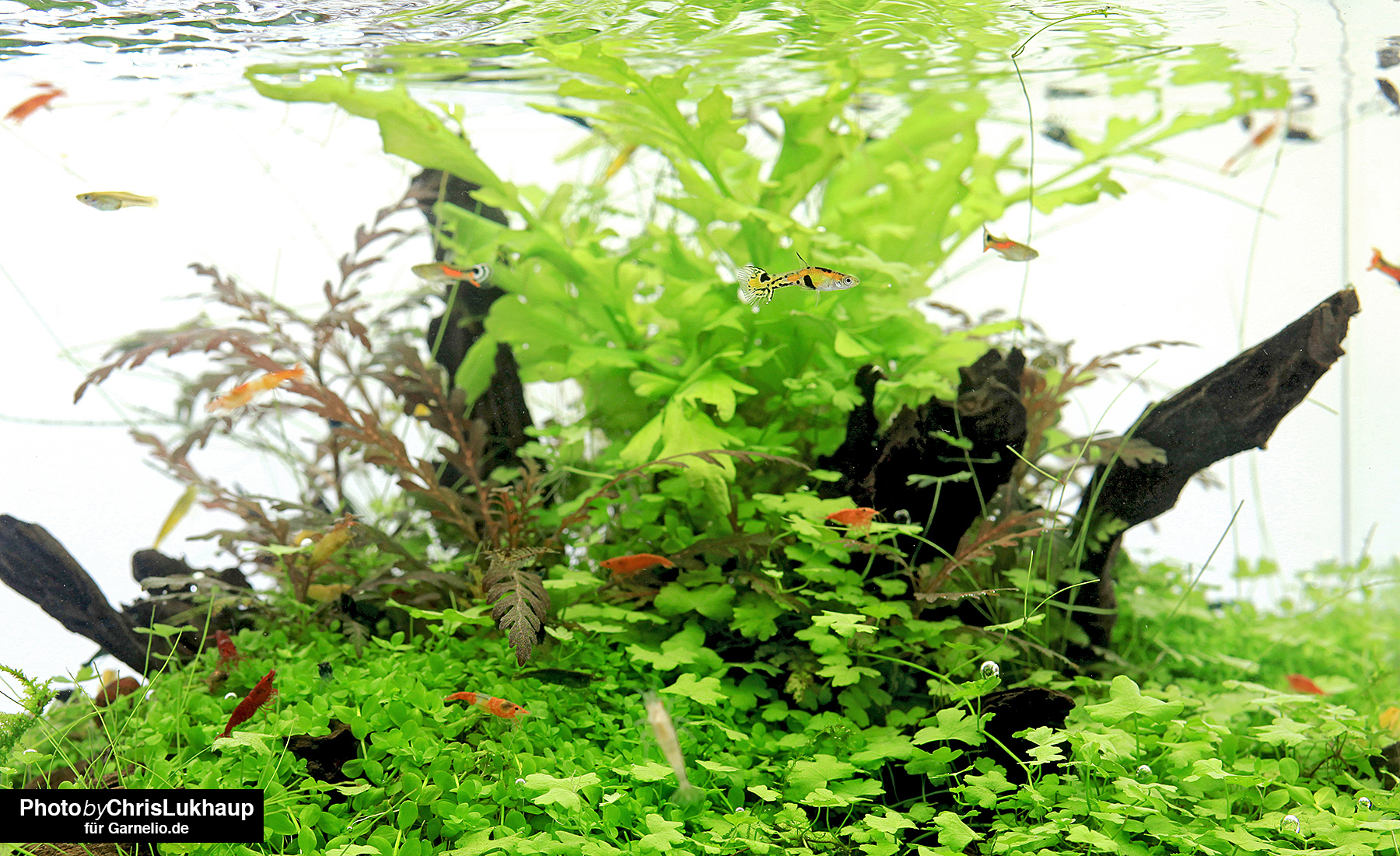
Suitable water values
Like dwarf shrimp, fish also have preferred water values; there are fish for soft, slightly acidic water as well as for alkaline water. The needs of the animals should be carefully considered - the aquarium animals will thank you with a long and healthy life, splendid colors and lively behavior.
The right aquarium size
When keeping fish, the required aquarium size is also important in any case. According to the Austrian Animal Husbandry Ordinance, no fish may be kept in aquariums with an edge length of less than 60 cm or 54 liters. In Germany there is no such law, but in 1998 the Federal Ministry of Consumer Protection, Food and Agriculture published a report: the minimum requirements for keeping ornamental fish (freshwater). Here, too, the minimum size of 54 liters is strongly recommended for the permanent keeping of ornamental fish in aquariums, but with the exception of breeding aquariums, aquariums for breeding preparation, temporary keeping and smaller aquariums for particularly small fish.
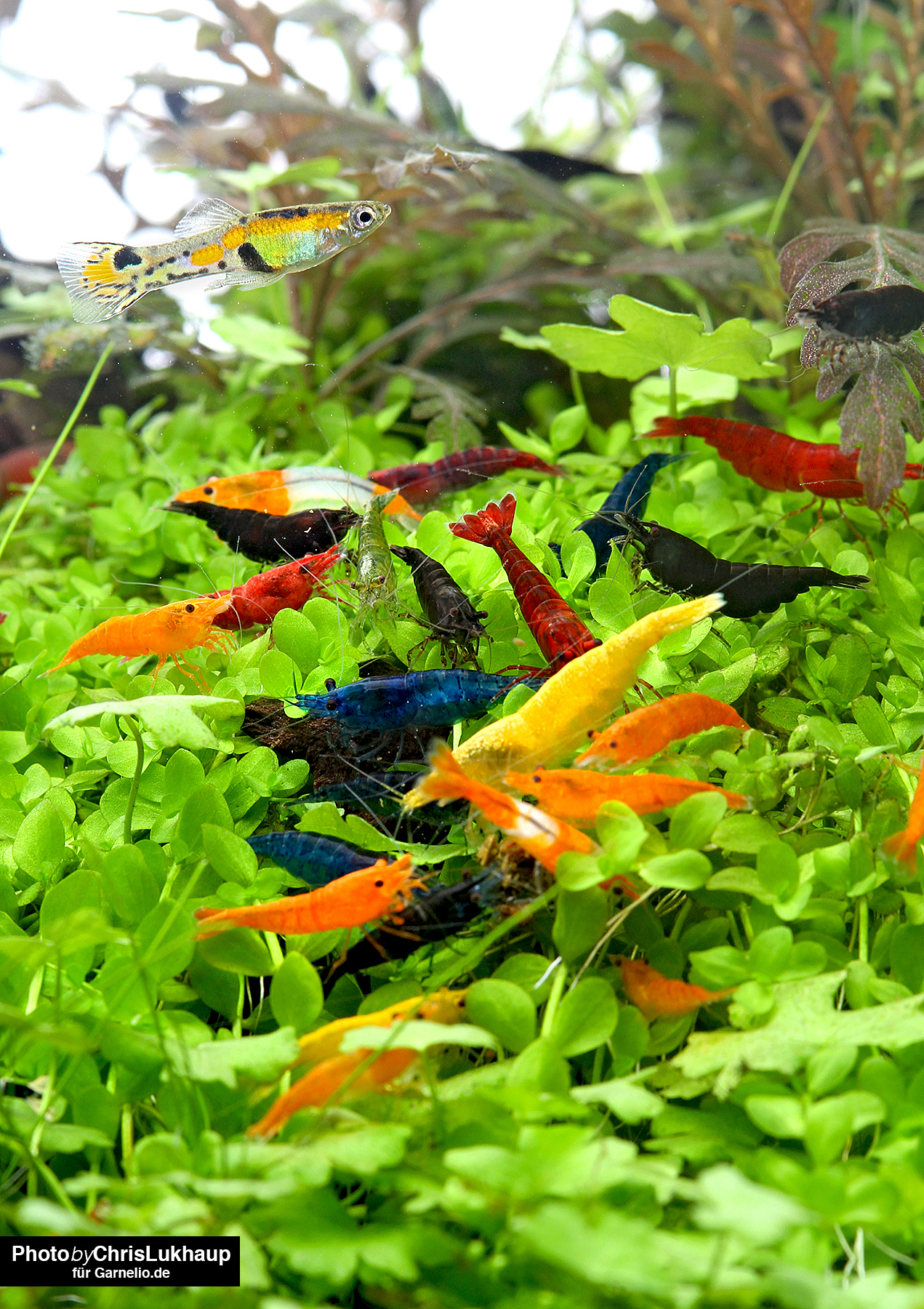
Fighting fish / Bettas
Nano aquariums can therefore not be recommended for fish keeping in general. A very big exception is the Betta splendens, the Siamese fighting fish. This beautiful, very territorial fish can be kept best and most stress-free only in single keeping, and especially the large-finned variants do not need a huge aquarium, but can be kept in cubes from 20 liters capacity. Fighting fish are character animals: There are fighting fish that can be kept together with shrimps quite wonderfully, but there are also Bettas that are true eating machines and regard the dwarf shrimps as a welcome snack. The old basic rule: "Eaten is what fits in the mouth" is supplemented by these fish if necessary by: "... and what does not fit, is bitten to fit". A socialization of Betta splendens and dwarf shrimps can be recommended only conditionally, here it really depends on the character of the respective Betta. Betta splendens likes weedy aquariums and likes to rest on large plant leaves. Attention: As labyrinth fish, fighting fish can actually drown! Therefore, please make sure that the Betta does not get trapped under decorative objects or other aquarium furnishings.
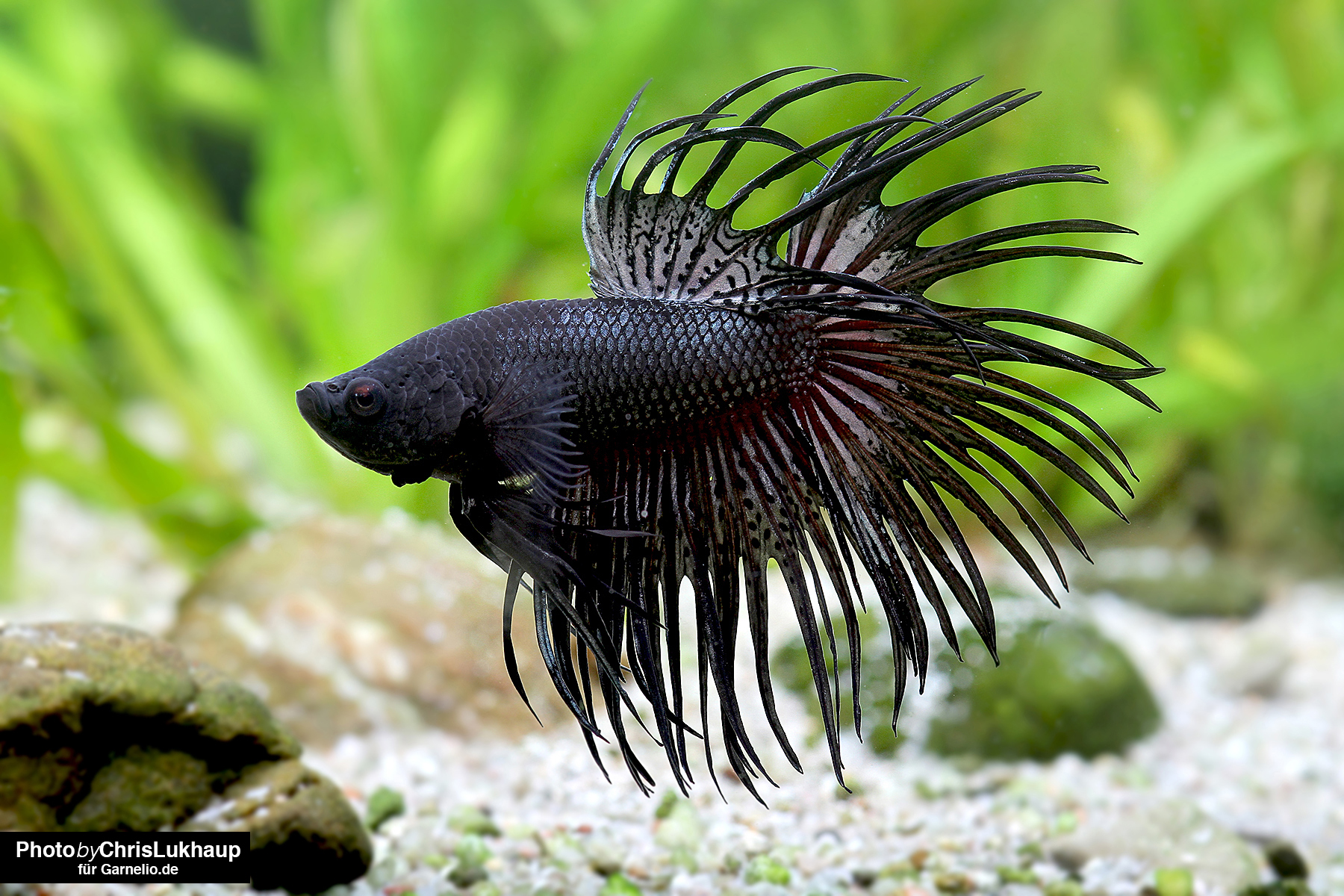
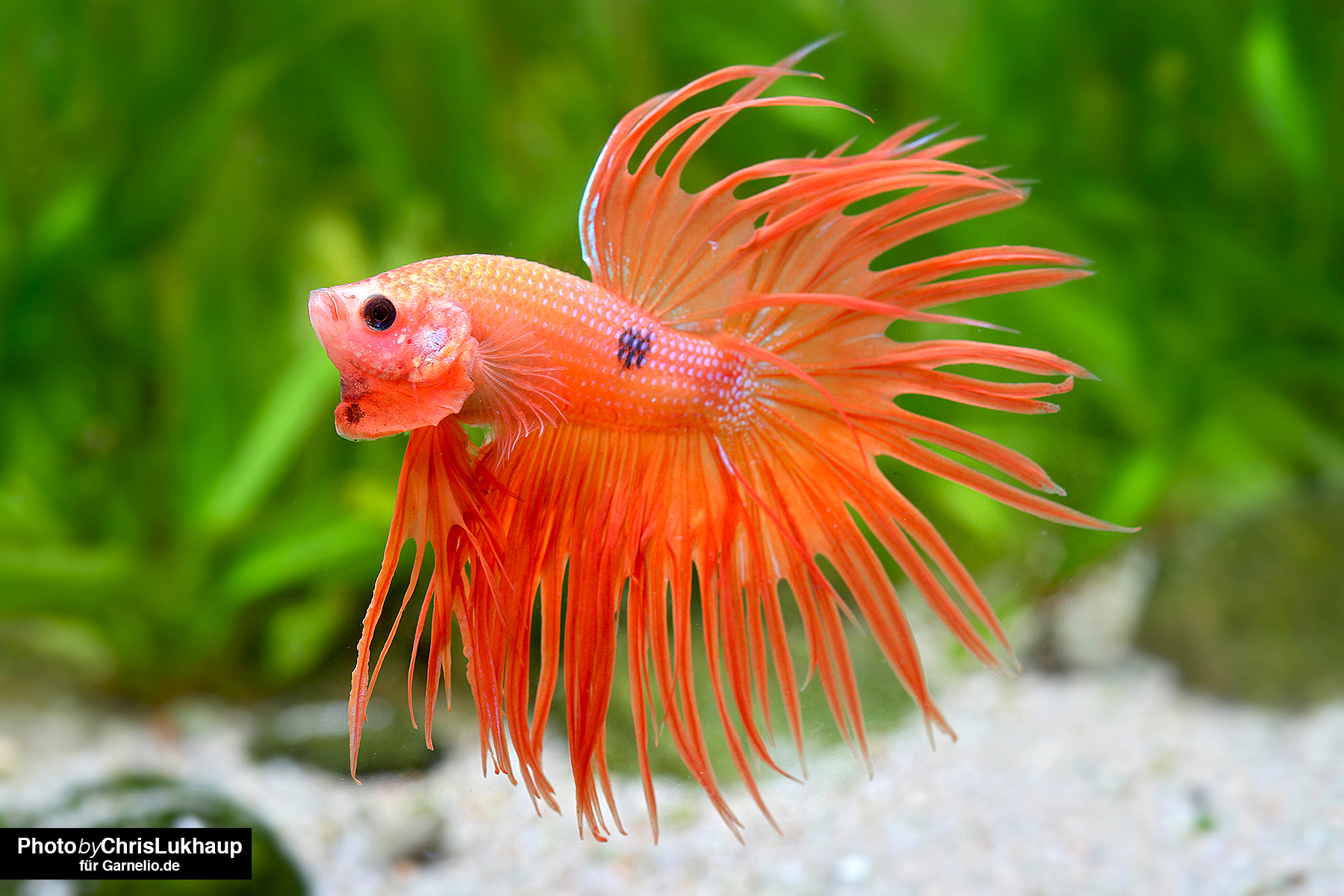
Tetra
The socialization of shrimp and tetras is also recommended to a limited extent. Tetras, which can be recognized by their small adipose fin on the back between the dorsal fin and the caudal fin, include the popular Blue, Black and Red Neons, the Neon Tetra, the Copper Tetra, the Sparkling Tetra, the Red-Headed Tetra, the Red of Rio and many other species. Tetras are omnivores, but some of them are quite predatory and actively hunt for small crustaceans and young shrimps. Here we recommend a good, finely structured planting with mosses and plants with fine foliage and for socialization only robust and fast reproducing shrimps, for example the Malawa shrimp / Sulawesi inland shrimp, the Red Fire shrimp, the Red Sakura shrimp, the White Pearl shrimp and all other species and colors of the genus Neocaridina known in aquaristics. A socialization of smaller tetras with shrimps, which cannot be eaten due to their size, will also be successful: Amano shr imp and - if there is sufficient current - fan shrimp.
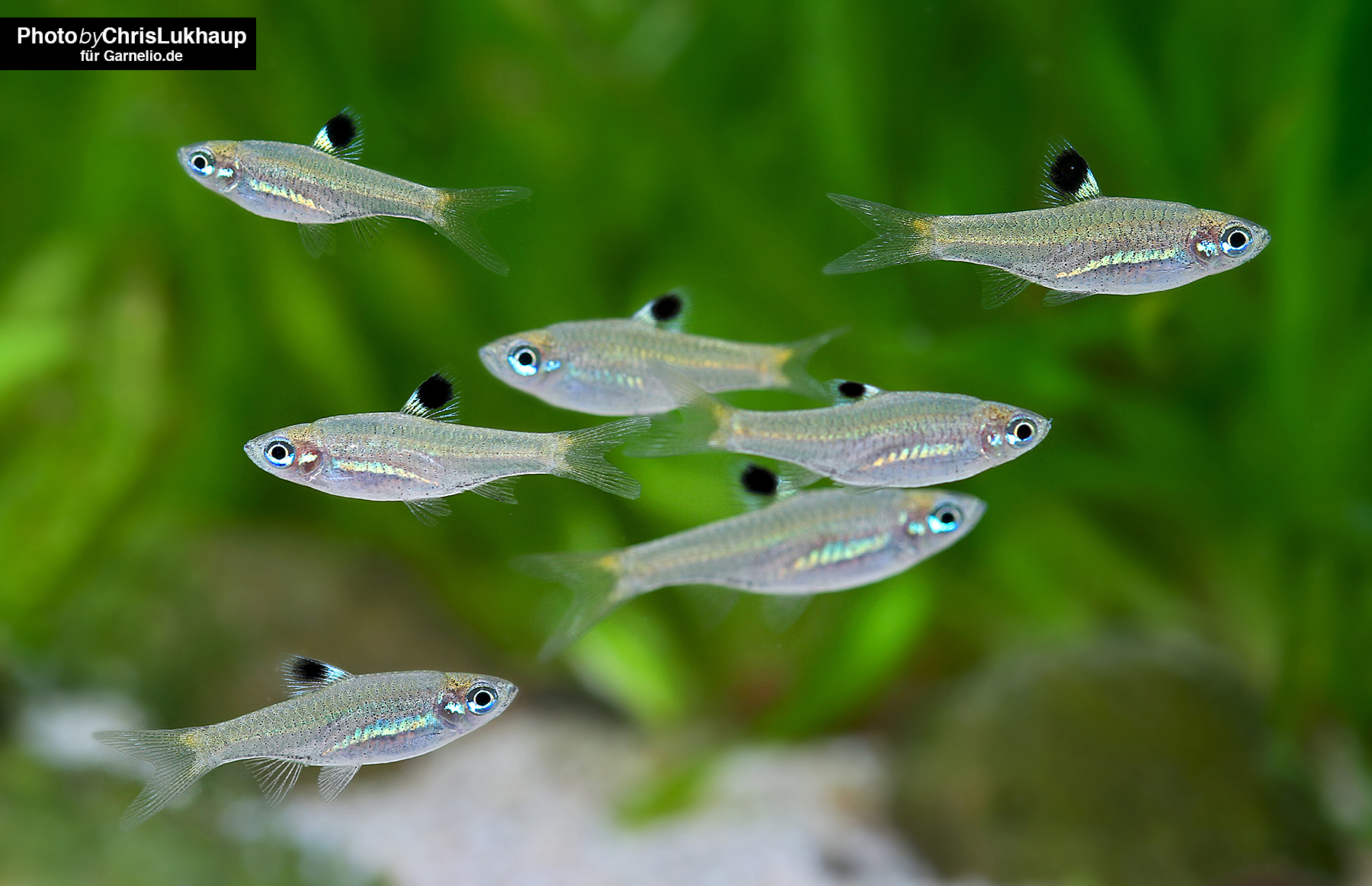
Livebearers
The same applies to a community aquarium with livebearers. Platies, Swordtails, Mollies, Guppies and Endler Guppies are also only recommended together with Neocaridina (Red Fire, Yellow Fire and all the other colorful jewels of the genus), Sulawesi Inland Shrimp, large Amano Shrimp or Fan Shrimp due to their size and water hardness requirements.
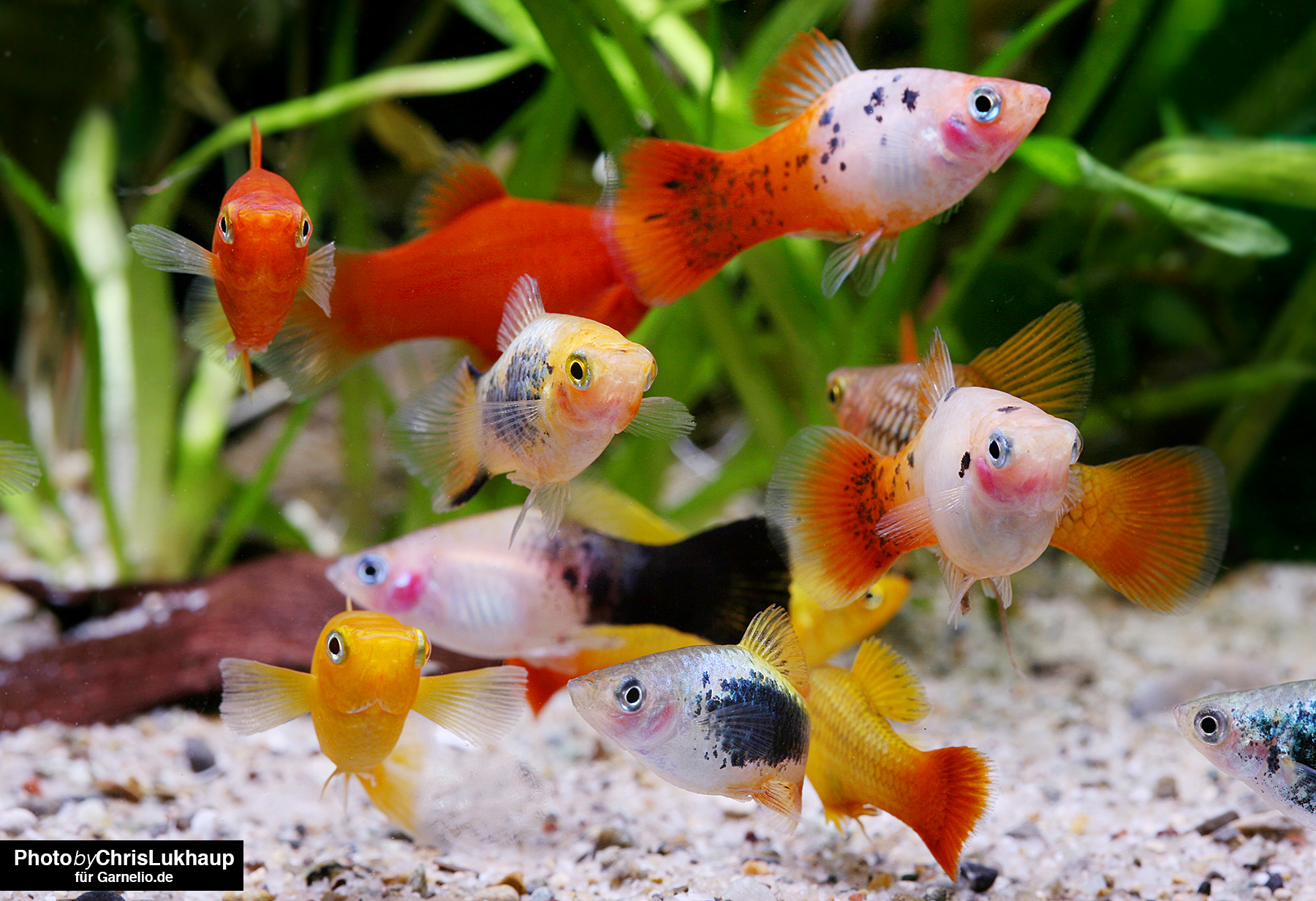
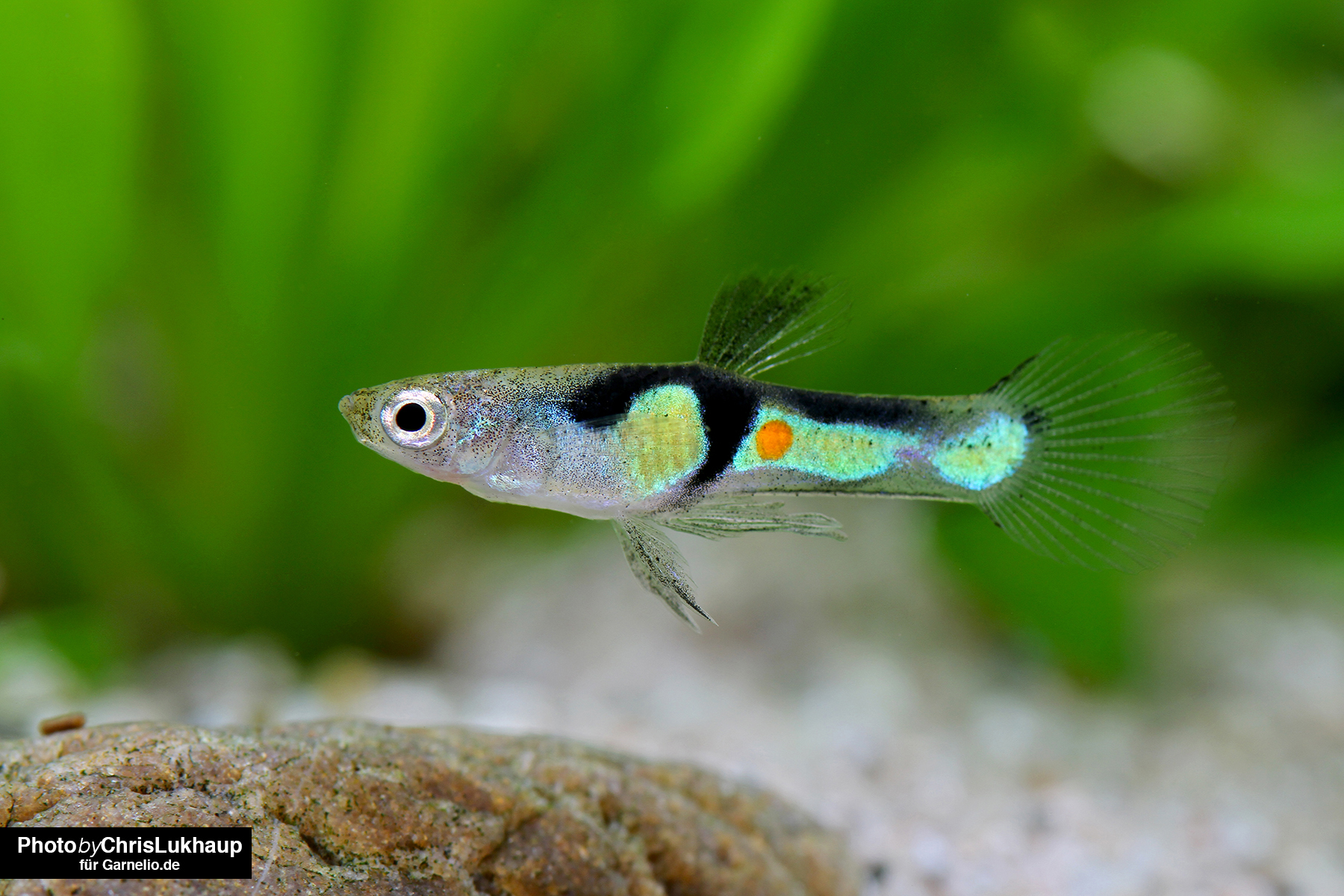
Carpets and rice fish
Smaller livebearers such as the Teddy Carp or the Dwarf Carp, smaller egg-laying toothcarps such as Norman's Luminous Eyefish or the closely related Ricefish, which belong to the Carp family, can also be kept together with shrimp that do not reproduce as well, for example with Tiger Shrimp or Bee Shrimp. If you want to keep dwarf shrimps especially with the larger carping shrimps and pike shrimps, they will necessarily need hiding places and plant thickets, and then you should again go for the more robust species that reproduce well.

Dwarf shrimps and barbs
To all dwarf shrimps again small danios fit very well, for example the mosquito dwarf danio, the guinea fowl danio, the cross stripe danio and of course also the zebra danio. They are almost unreservedly recommended for socialization with shrimp, always provided that the preferred water values of the species match, as does the temperature range. Robust shrimp can also be kept together with the somewhat larger barbs such as the moss barb, always provided that the aquarium offers sufficient hiding places.
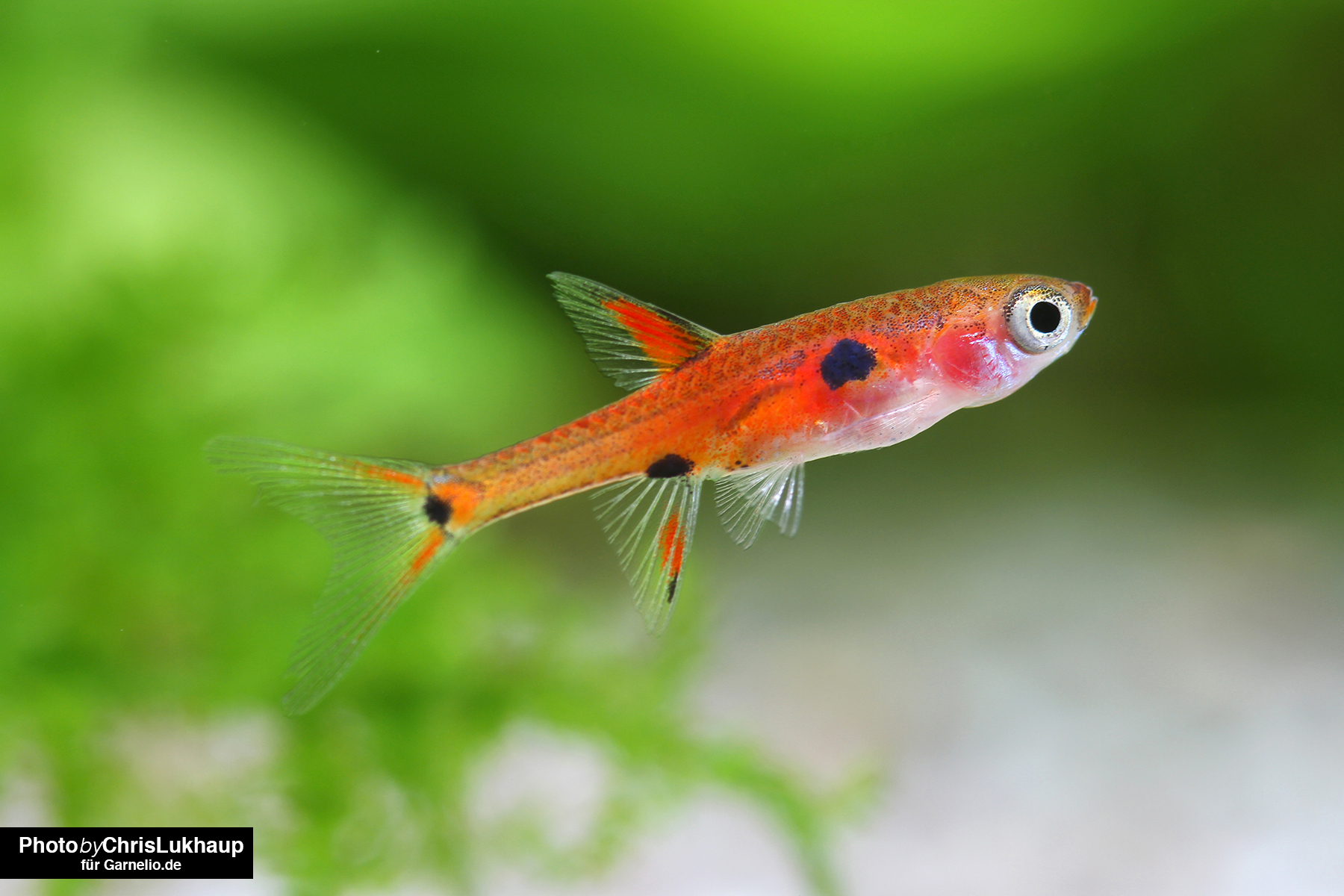
Loricariids and dwarf armored catfishes
Most dwarf shrimp can also be kept together with algae eaters such as Ancistrus / Sucker Catfish or Otocinclus / Earless Catfish and also with Witch Catfish without any problems, as well as with most armored catfish. Dwarf armored catfish and smaller species such as the panda armored catfish are ideally suited here.
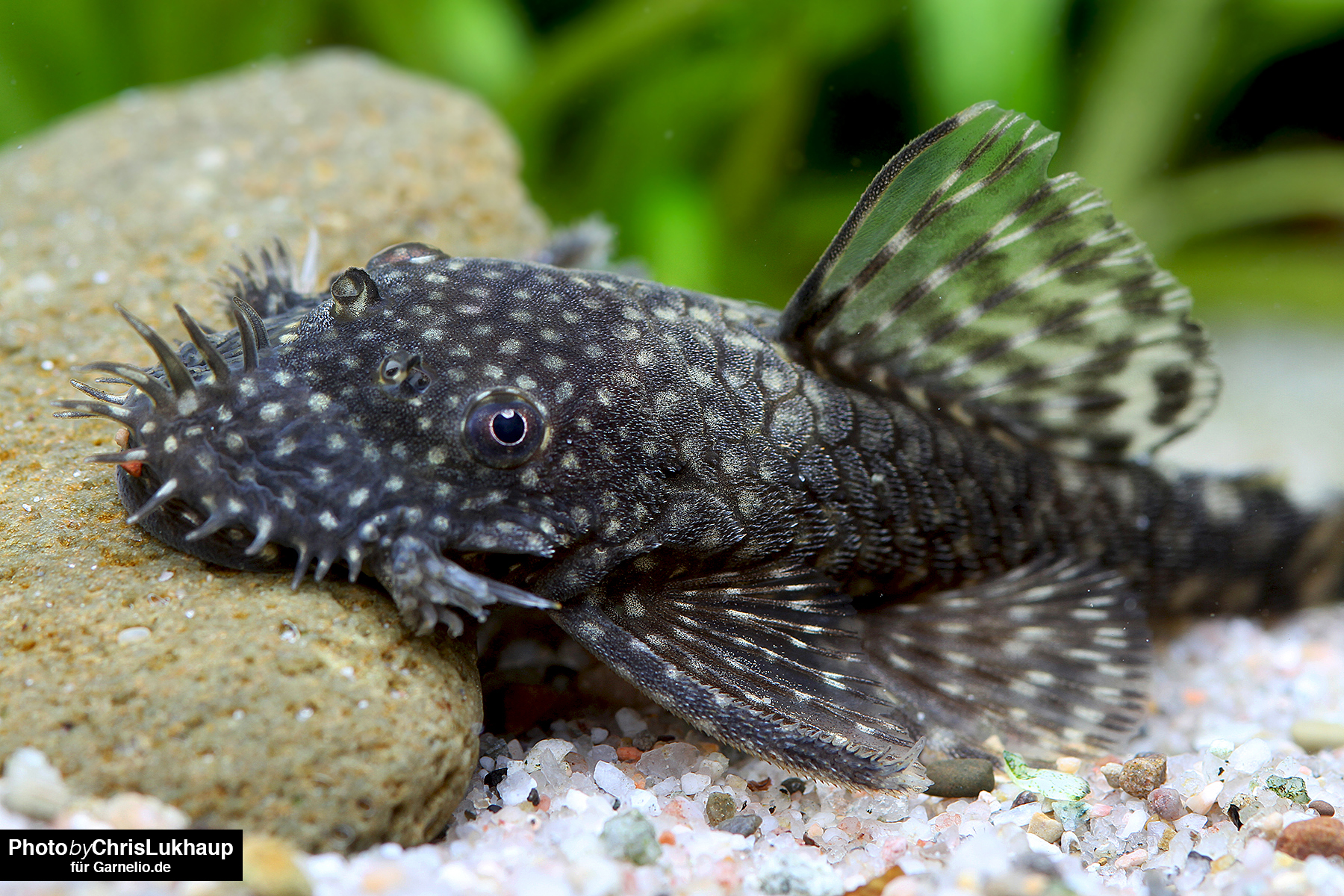
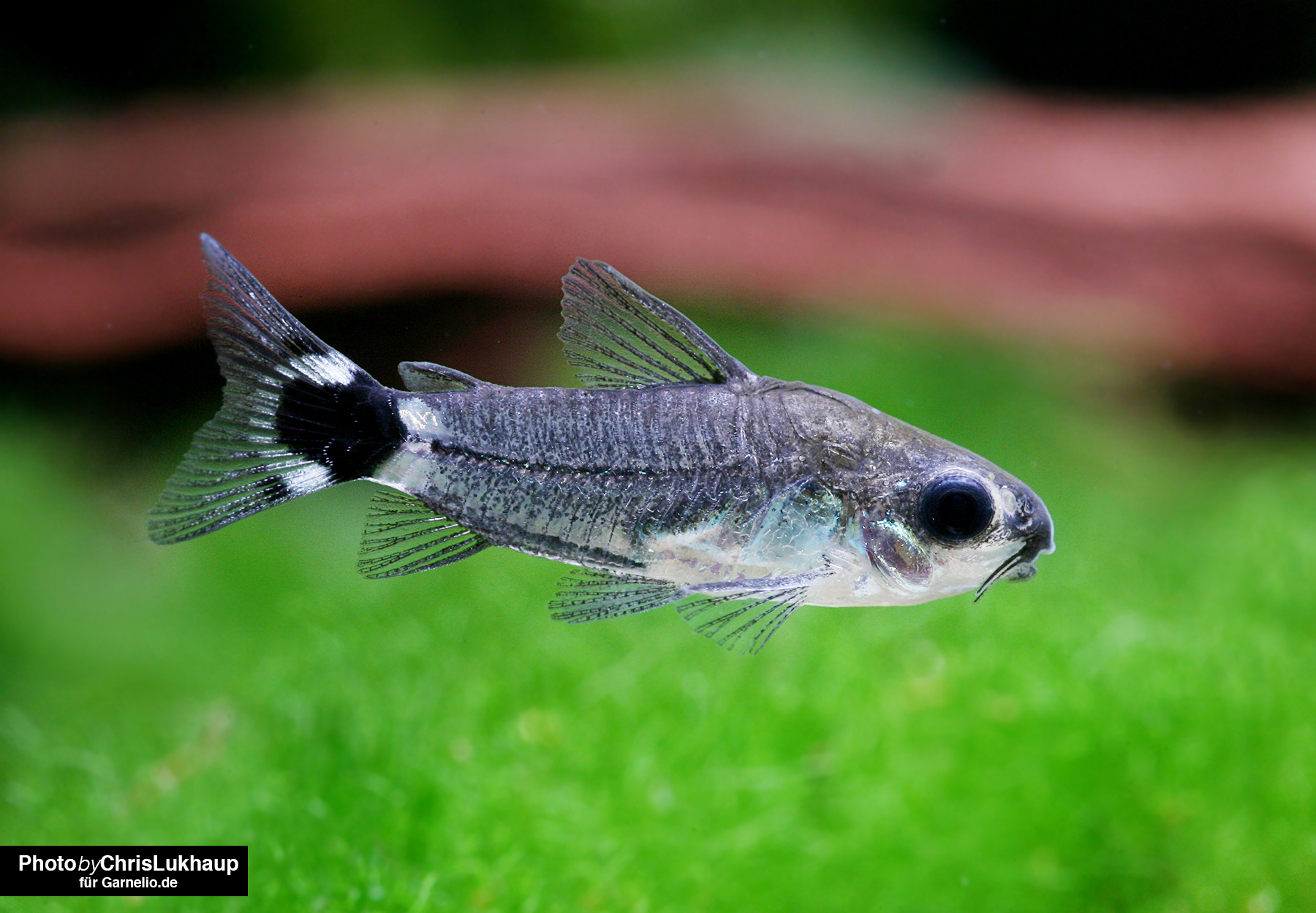
Shrimps not suitable for the community tank
Shrimps from the Malili lake system (Lake Matano, Lake Mahalona, Lake Towuti, Lake Masapi and Lake Montoa) and Lake Poso on Sulawesi should not be kept with fish at all. These shrimp are too specific in their requirements and are already very stress sensitive even without fish community.
Also quite stress sensitive are the new high breeding bee shrimp like Pintos, Boas and other variants and hybrids of the bee shrimp.


Ein insgesamt sehr hilfreicher Blog der mir persönlich sehr gefallen hat.
Guter hilfreicher Blog der mir meine Entscheidung ob ich zu meiner Gruppe Neocardinas Fische da zu tuen soll sehr erleichtert hat
Frage
Wie heißt die Salmlerart auf dem gezeigten Foto?
Ein guter Bericht!
Toller Bericht! Aber ich habe eine Frage (vielleicht hab ich es auch überlesen): Was ist das für ein roter Fisch der neben der Garnele schwimmt?
Hilfreicher Bericht
Ich finde den Bericht auch sehr gut gemacht und sehr hilfreich!
Der Fisch neben der Garnele auf dem Bild ist übrigens ein Kap Lopez ein Fisch der Killifischgattung!
Salmler
Bei der Salmlerart auf dem Foto dürfte es sich um Brevibora dorsiocellata handeln.
guter beitrag, bitte bildbeschreibungen hinzufügen
der rote/orange fisch neben der garnele ist ein Aphysemion australe "Kap Lopez"
Zwergbuntbarsche mit Zwerggarnelen
Ich fand den Artikel sehr hilfreich, bin jedoch immer noch nicht sicher ob ich jetzt Zwergbuntbarsche mit Red Sakuras oder Red Fire Garnelen zusammen halten könnte. Zwergbuntbarsche werden ja nicht allzu gross ca 5cm, weshalb ich es für möglich halte.
Hat jemand damit bereits Erfahrung gemacht?
Für genügend Futter und Verstechmöglichkeiten ist natürlich gesorgt...
das ist die Hilfe die ich benötige
Für mich als Aquaristik Anfängerin ist das endlich einmal eine konkrete Hilfe. Ich habe schon Stunden damit verbracht, Fisch- chen und Garnelen in ihren Bedürfnissen zusammenpassend zu finden. Jetzt habe ich die Bestätigung, dass ich mich für die richtigen Fischchen entschieden habe. Nur bei den Garnelen war ich mir nicht so sicher. Ich liebe es sehr, beide Tierarten zu beobachten und habe dabei schon manch köstliche Situation beobachtet.
Herzlichen Dank also
Ulla Schaal
Schöner Beitrag
Danke für den informativen Beitrag,super,......